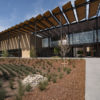Stanford student examines how Italy became democracy after WWII
Italy, a previously fascist country, became a democracy shortly after World War II ended. That transition and the country’s 1948 election are still sources of debate, and led Stanford undergraduate Anatole Schneider to search for answers.
Stanford sophomore Anatole Schneider has been captivated by the Cold War since high school. So, when he learned of a summer research position to study Italian elections after World War II under Norman Naimark, a professor of history, Schneider jumped on the opportunity.
“I always liked history and that period especially is fascinating to me,” Schneider said. “You had these two superpowers that made other countries do the dirty work.”
Over the past three months, Schneider has immersed himself in the details and major characters of Italy’s 1948 general election – which served as the backdrop for one of the first major Cold War clashes between the United States and the Soviet Union.
The newly created Central Intelligence Agency carried out its first covert operation by funneling funds to the Christian Democratic Party to try to sway the election, while the Soviet Union supported the Italian Communist Party in its aspiration to grab power.
The Communist Party, led by Palmiro Togliatti, was predicted to win, but the Christian Democrats and their founder, Alcide de Gasperi, were victorious, claiming a substantial majority of seats in Italy’s Chamber of Deputies and Senate.
Historians still debate how and why Italy, a fascist state just three years earlier, became a democracy.
“World War II took a lot out of Europe, and Italy was a horrible mess especially,” Naimark said. “Communists had a real chance of winning that election. Why didn’t they?”
Some experts point to the U.S. intervention. Others disregard it, arguing that the Vatican’s influence and its aversion to communism played an important part.
Naimark is exploring those questions, among others, in his upcoming book about postwar Europe, tentatively called Stalin, Postwar Europe and Struggle for Sovereignty. Naimark mentors undergraduates almost every summer. He described Schneider as a bright student and found it rewarding to guide his studies.
“He has been very helpful and dedicated to this project,” Naimark said.
Learning about history
Schneider spent most of his summer days at the Hoover Institution Library & Archives and Green Library, studying about 1,000 issues of Italian newspapers from 1947 and 1948 as well as Italian politicians’ letters, documents and other literature.
Schneider, new to historical research, said the project taught him to be patient and made him realize the importance of relying on primary documents and properly sourcing them during his analysis. He also said the experience allowed him to learn about these historical figures on a more personal level.
“It’s easy, when you study history, to forget that these were real people,” Schneider said. “History is one big story that has a lot of characters.”
He said he particularly enjoyed learning about Togliatti, whom he described as a complex leader with a calm demeanor. Togliatti worked with Soviets to gain political power but also tried compromising with Christian Democrats. He shattered Schneider’s perception of communists.
“You get this idea that communists took over counties in this violent, anti-Western way,” Schneider said. “But this guy was not evil. He believed communism was the best solution, but he also believed in doing what was best for Italy.”
Schneider, who is currently undecided but is considering a major in the humanities, also said he realized that some questions about history may go unanswered.
“Historians are always trying to look for data to try to confirm hypotheses, but in the end, there is no way to really know certain things,” he said. “We may never truly know why Christian Democrats won that election.”
Media Contacts
Alex Shashkevich, Stanford News Service: ashashkevich@stanford.edu, (650) 497-4419




